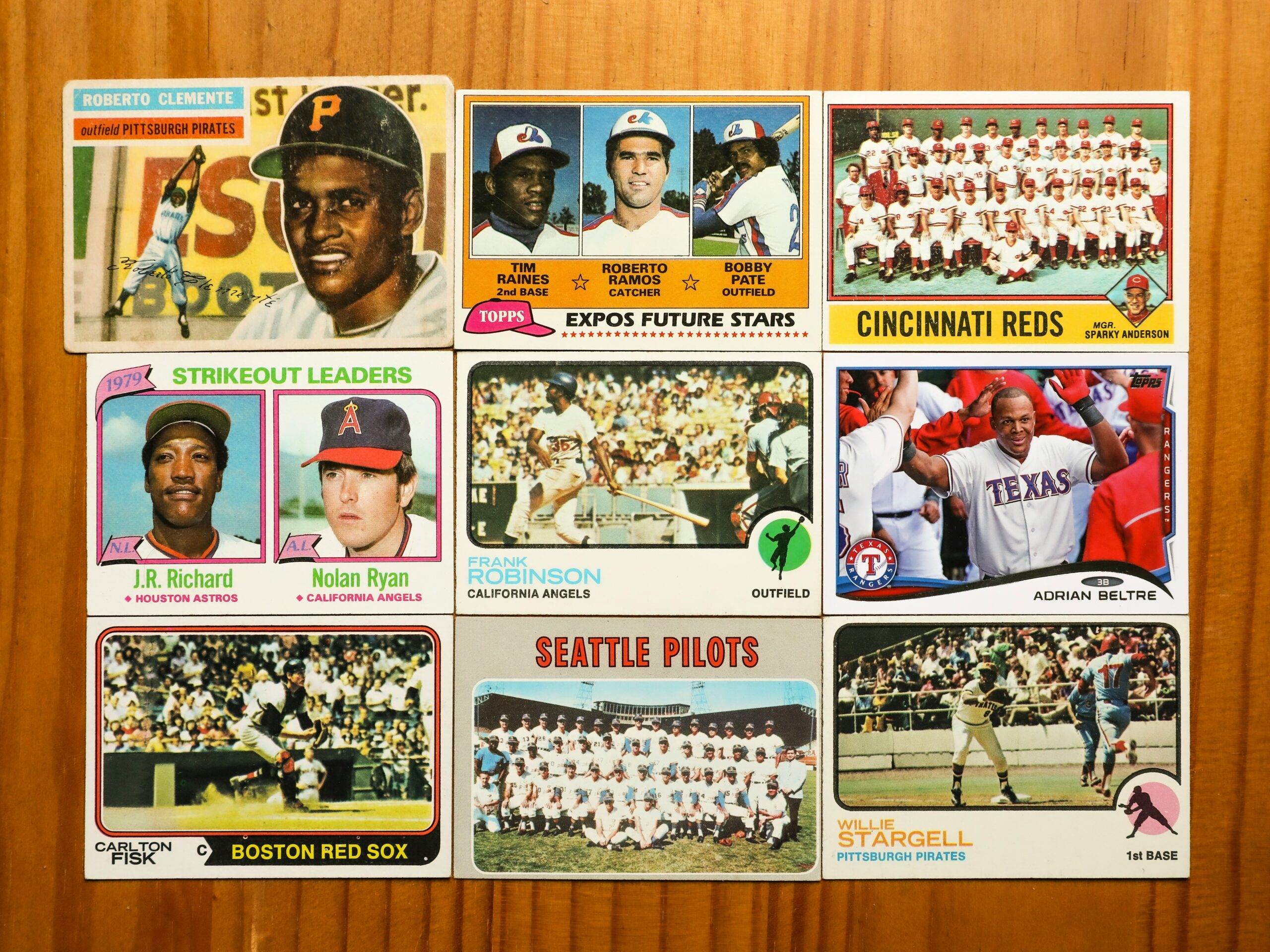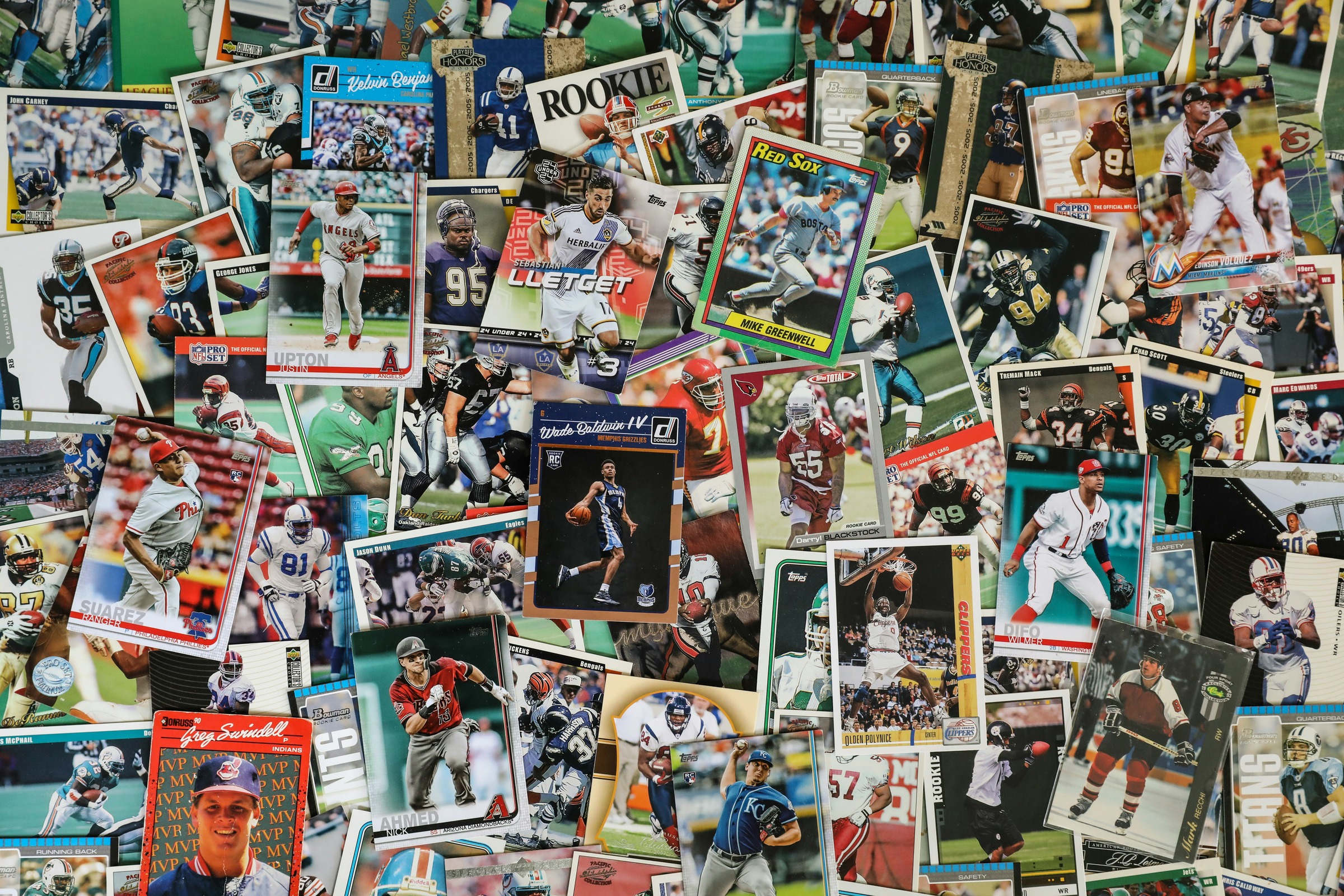Are you new to baseball card collecting? It can be an overwhelming process with so many different products to choose from. From high-end and low-end cards, to blaster boxes and hobby boxes, to wondering who to collect, starting a collection can put a dent in your bank account if you go down the wrong path. That’s why Hobby Listings is stepping in, putting together a comprehensive beginner’s guide to collecting baseball cards.
I started collecting baseball cards when I was a young boy in the late 1980s, so my collection is filled with tens of thousands of Topps, Fleer, Donruss and Upper Deck cards from the junk wax era. Now, will my dozens of Shane Rawley, Don Carmen and Greg Gross cards help me financially? No. But that’s not the point of collecting. Those cards are a part of my childhood, a part of my collecting journey that I won’t part with. Also, these were players who were on my favorite baseball team: the Philadelphia Phillies.
As I started getting older, my collection began to expand, especially into vintage cards. I absolutely love cards from the 1950s, 60s, and 70s. Some of my favorite cards in my collection include a 1954 Topps Hank Aaron rookie card, 1956 Topps Jackie Robinson, 1957 Topps Frank Robinson rookie card, 1966 & 1967 Topps Mickey Mantle cards, 1968 Topps Nolan Ryan rookie card and 1973 Topps Mike Schmidt rookie card (my favorite player growing up). I targeted vintage cards at an early age because that’s where my heart took me with the lore and legends of these players.

It’s much more expensive collecting cards today as the industry saw a boom during the COVID-19 pandemic. Hobby prices continue to rise and card grading has added millions of dollars into the industry.
Don’t let that discourage your baseball card collecting journey. How do you begin your quest to start your collection? Just follow these six simple steps from HobbyListings.
1. SET A BUDGET
Make sure you set aside how much you want to spend on your collection. Whether you’re on an allowance or getting a paycheck, you don’t want to blow all your money instantly. Putting together a budget helps you set parameters on how much you’re putting toward your collection compared to other amenities in your life.
2. START SIMPLE
Keep it easy on yourself as to not get overwhelmed. Start by collecting your favorite players or your favorite teams. Go to your local card shops, scour eBay, and even go on social media sites like Facebook, Instagram and X (formerly Twitter) to look for deals. Start small by looking for low-priced rookie cards and, if possible, cheaper autographed cards. If you do end up buying from dealers on social media, make sure they are reputable and have lots of vouches from other collectors. Also, when paying from sites like PayPal and Venmo, make sure to use Goods & Services in case there are any issues. By doing so, you’re protecting yourself and also will get your money back if something happens.
3. BUY BLASTER BOXES OVER HOBBY BOXES
Hobby boxes can get expensive, as many sell for hundreds of dollars. That can be a lot of money for someone starting out collecting, especially if they’re young. That’s where blaster boxes can be a better buy. They’re usually around $30 and can be found at your local Target and Walmart stores and online. While there’s no guarantees of a big hit, there’s still a chance of autos and good rookie and parallel cards.
4. STORING YOUR CARDS
Make sure you have boxes, binders and toploaders at your ready when buying cards. You don’t want to leave cards out in the elements on your desk as that could lead to unwanted damage.
5. ORGANIZE YOUR CARDS
This is something I wished I did when I first started collecting cards when I was 7 years old. Instead of putting different types of cards in one box (ie: 2023 Topps with 2023 Bowman), have separate boxes and binders for them. That makes it easier to search through your collection. If you’re trying to complete a set, it’s good to have them in one place instead of scattered through different boxes or binders.
6. HAVE FUN
This is the most important part of collecting – have fun with it! Make sure you’re having a good time collecting cards. If it starts to feel like it’s overwhelming at all, just take a step back. That’s totally fine. Also, go to your local card shop and go on social media to find different baseball card collecting communities. You can make many new friends by doing so, and learn new things about collecting!
Doing these six simple steps is a great way to get your baseball card collection off the ground. And by doing so, you’ll learn what you like, what you want and how to grow it.

Card Collector Glossary
- Base Card: A standard card included in a set, not a special or chase card.
- Blaster Box: A retail box of cards, usually containing fewer packs and cards than a hobby box.
- Break: An event where a collector or dealer opens a box or case of cards to distribute to participants who have bought into the break.
- Case Hit: A rare card or item guaranteed once in every case of product.
- Chase Card: A card that is more rare or desirable than the typical base cards in a set.
- Condition: The physical state of a card, which affects its value. Conditions can range from poor to gem mint.
- Factory Set: A complete set of cards sold in its entirety, usually sealed by the manufacturer.
- Gem Mint: A grading term indicating a card is in almost perfect condition.
- Hobby Box: A box of cards typically sold through specialized dealers, often containing more packs and exclusive content compared to retail boxes.
- Insert: A card that is part of a special subset within a main set, often featuring unique designs or themes.
- Jersey Card: A card that includes a piece of a player’s worn jersey.
- Limited Edition: Cards that are produced in limited quantities.
- Memorabilia Card: A card containing a piece of equipment or clothing used by a player.
- Parallel: A card that is similar to a base card but with some variations like foil, different colors, or numbering.
- Patch Card: Similar to a jersey card, but specifically includes a piece of a player’s patch from their uniform.
- PSA: Professional Sports Authenticator, a company known for grading and authenticating sports cards.
- Rookie Card: The first card of a player in their professional uniform.
- RPA: Rookie patch autograph card.
- Short Print (SP): A card that has been printed in smaller quantities than the standard base cards.
- Signature Card/Autograph Card: A card that includes the player’s autograph, either directly on the card or on a sticker applied to the card.
- Variation: A card that has an intentional difference from the base card, often subtle.
This list covers many of the basic terms you’ll encounter in the world of sports card collecting. There are certainly more terms and nuances as you delve deeper into this hobby.
